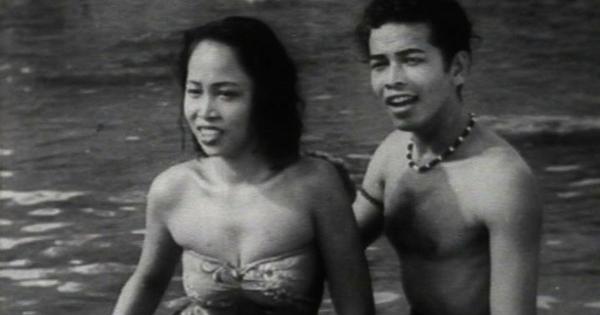BS Rajhans’s contributions to Malay cinema paved the way for future generations of filmmakers and stars.
BS Rajhans played a pivotal role in the evolution of Malay cinema during the early 20th century, infusing local screens with color, music, and fresh talent. His journey began in the early 1930s when Indian producer Rai Bahadur Seth Hurdutroy Motilal Chamria screened a Hindi film adaptation of the tale of Layla and Majnun in Singapore. The film’s success prompted Chamria to envision a Malay version of the story, leading him to invite Rajhans, a relatively unknown Punjabi Sikh director from Calcutta, to take on this project.
Rajhans’s arrival in Singapore in May 1933 was noted by local media, marking the beginning of his contributions to the region’s film industry. With a clear vision, he assembled a cast comprising local aristocrats and renowned operatic performers. Shooting entirely in Singapore, he tailored the film for local audiences, integrating authentic Arab and Egyptian music and dance sequences. The resulting film, Leila Majnun, premiered in March 1934 during the Hari Raya Haji holidays, becoming the first Malay-language film produced in Singapore. It garnered significant acclaim, running for a week at the historic Alhambra Cinema and receiving enthusiastic audiences in Penang as well.
The success of Leila Majnun inspired others in the Malay Peninsula and Singapore to explore filmmaking. Rajhans and his contemporaries overcame language barriers, creating films that set benchmarks for modern Malay cinema. However, the onset of Japanese occupation in the region brought challenges, leading to a ban on local film productions and tragically resulting in the destruction of the only surviving print of Leila Majnun. Rajhans was in the midst of filming Menantu Durhaka (Unfaithful Son-in-Law) when the war interrupted his work. Filming resumed in 1945, and the film was released a year later.
Post-war, Rajhans emerged as a leading filmmaker in Singapore, with his 1947 film Seruan Merdeka (The Call For Freedom) marking a significant milestone. This film was notable for featuring both Malay and Chinese actors, illustrating the unity of young Singaporeans against Japanese forces. Although it faced commercial challenges, Seruan Merdeka marked the beginning of a 25-year golden age for Malay cinema in Singapore, a period that coincided with the country’s expulsion from Malaysia.
During this era, Rajhans sought to bridge cultural gaps, leading to a notable influence from Indian cinema in Malay films. He began scouting for fresh Malay talent, moving away from using former opera actors for his projects. His film Singapura Di Waktu Malam (Singapore Night) became a commercial success, resonating with audiences. Rajhans’s 1949 romantic drama Nilam also found acclaim among the Malay diaspora.
In 1953, he directed Buloh Perindu (The Magic Flute), the first full-length color feature film in Malaya, showcasing vibrant cultural themes. Despite mixed critical reception, Rajhans’s contributions to Malay cinema solidified his status as an auteur. His most significant legacy is perhaps his discovery of P Ramlee, a talented singer who would become an iconic figure in South East Asian cinema. Rajhans recognized P Ramlee’s potential during a talent scouting trip in 1948, offering him a role in the film Chinta (Love) and providing vocals for the lead actor, thus launching Ramlee’s illustrious career.








